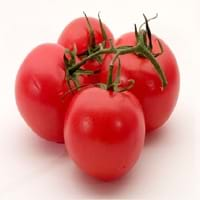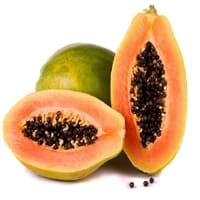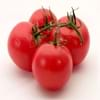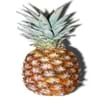Health Benefits
Anti depressant, Cancer prevention, Heart care, Muscle pain relief, Prevents constipation, Regulation of heart rate, Weight loss properties
Arthritis prevention, Asthma treatment, Cancer prevention, Heart care, Prevents macular degeneration, Prevents rheumatoid
General Benefits
Controls blood pressure, Eye care, Maintains healthy cholesterol level, Strengthens bones
Anti-inflammatory properties, Boosts immune system, Digestive aid, Healing of wounds, Maintains healthy cholesterol level, Strengthens bones
Skin Benefits
Anti-aging benefits, Heals sunburn, Skin rejuvenation, Treatment of acne, Treatment of skin diseases
Anti-aging benefits, Hydrates skin, Skin revitalization, Treatment of acne, Treatment of dark spots
Hair Benefits
Good conditioner, Prevents hair loss, Softening mask
Good conditioner, Promotes longer and healthier hair, Softening mask, Treatment of dandruff
Allergy Symptoms
Anaphylaxis, Coughing, Diarrhea, Eczema, Hives, Itching sensation in throat, Nausea, Skin Rashes, Runny nose, Sneezing, Swelling of mouth, tongue or lips, Vomiting, Wheezing
Abdominal pains, Carotenemia on excessive consumtion, Latex Allergy
Side Effects
Heart burn
Allergic reaction, Skin problems, Possibly unsafe during pregnancy
Best Time to Eat
Along with meal, Don't consume at night and before bed, Morning time (before lunch)
As a snack in the late afternoon, Don't consume at night and before bed, Don't eat after meal
Vitamin B5 (Pantothenic Acid)
Vitamin C (Ascorbic Acid)
Vitamin K (Phyllochinone)
Phytosterol
Not Available
Calories in Fresh Fruit with Peel
Not Available
Calories in Fresh Fruit without Peel
Not Available
Type
Berry, Fruit vegetable
Melon, Tree fruit
Season
All seasons
All seasons
Varieties
Better Boy, Early Girl, Beefsteak, Beefmaster, Pink Brandywinem, Caspian Pink, Thai Pinks, Hawaiian Pineapple, Kellogg’s Breakfast, Cherokee Purple, Black Ethiopian and Paul Robeson
Coorg Honey Dew, Pusa Dwarf, Pusa Giant, Pusa Majesty, Pusa Delicious, Pusa Dwarf, Solo, Ranchi, Taiwan-785 and Taiwan-786
Color
Green, Orange, Pink, Purplish black, Red, White, Yellow
Orange, Yellow
Taste
Sour, Sweet
Luscious, Sweet
Origin
Central America, South America
Mexico, Central America
Soil Type
Loam, Sandy loam
Rocky, Sandy, Well-drained
Climatic Conditions
Sunny, Warm
Warm, Without frosts
Facts about
- Around 10,000 varieties of tomatoes are grown in the world.
- In Buñol, people celebrate the Tomatina festival where around 1.5 lakh tomatoes are used.
- As per Guinness book of records, heaviest tomato weighed 3.51 kg.
- Papaya seeds show contraceptive effects in male monkeys.
- Their seeds are used as a replacement for black pepper in some nations due to peppery taste.
- Papaya is known by funny names like paw paw or papaw and the mamao.
Other Countries
Brazil, Egypt, India, Iran, Italy, Mexico, Spain, Turkey, United States of America
Brazil, Indonesia, Mexico, Nigeria
Top Importer
Nigeria
United States of America
Top Exporter
Netherlands
Mexico
Botanical Name
Solanum lycopersicum
Carica papaya
Synonym
Lycopersicon esculentum
Not Available
Subkingdom
Tracheobionta
Tracheobionta
Division
Magnoliophyta
Magnoliophyta
Class
Magnoliopsida
Magnoliopsida
Subclass
Asteridae
Dillenhidae
Order
Solanales
Brassicales
Family
Solanaceae
Caricaceae
Species
S. lycopersicum
C. papaya
Generic Group
Nightshade
Papaya
Difference Between Tomato and Papaya
We might think that Tomato and Papaya are similar with respect to nutritional value and health benefits. But the nutrient content of both fruits is different. Tomato and Papaya Facts such as their taste, shape, color, and size are also distinct. The difference between Tomato and Papaya is explained here.
The amount of calories in 100 gm of fresh Tomato and Papaya with peel is 18.00 kcal and Not Available and the amount of calories without peel is Not Available and 43.00 kcal respectively. Thus, Tomato and Papaya belong to and category.These fruits might or might not differ with respect to their scientific classification. The order of Tomato and Papaya is Solanales and Brassicales respectively. Tomato belongs to Solanaceae family and Papaya belongs to Caricaceae family. Tomato belongs to Solanum genus of S. lycopersicum species and Papaya belongs to Carica genus of C. papaya species. Beings plants, both fruits belong to Plantae Kingdom.









